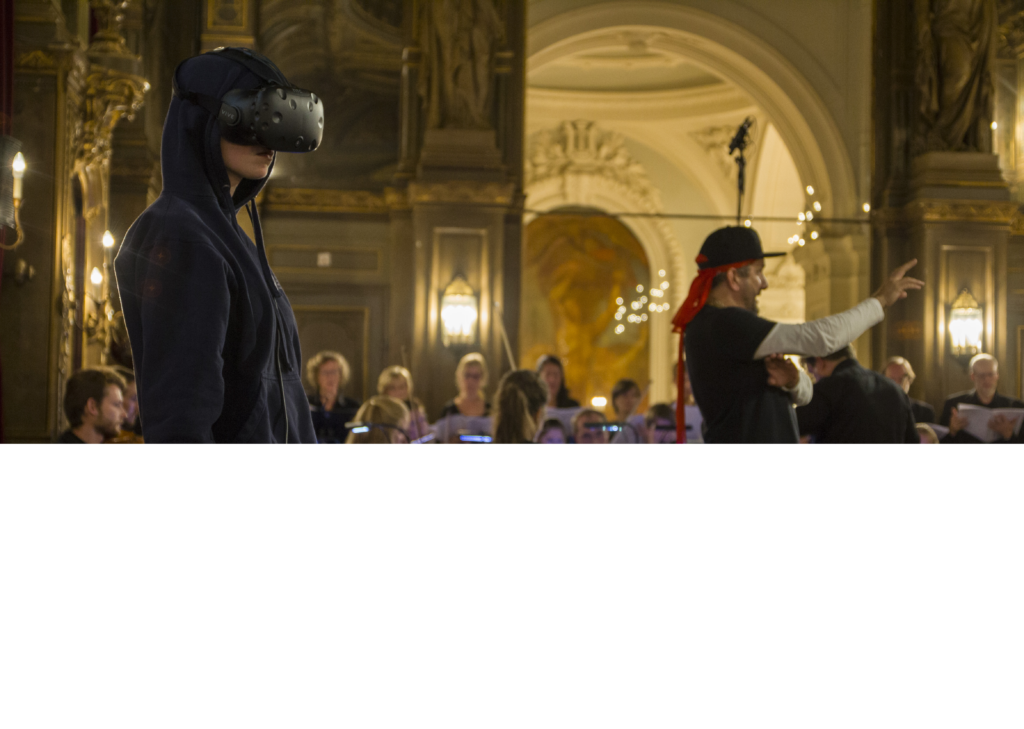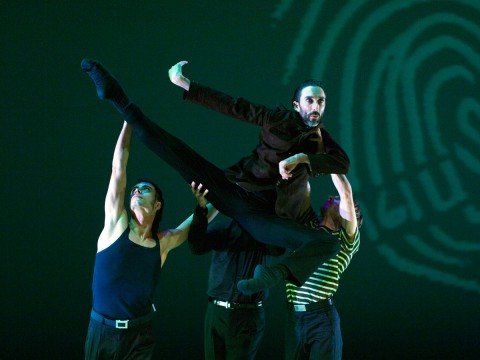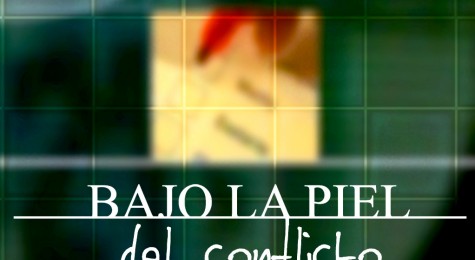
Fausto
An opera by Luc Steels (music) and Oscar Vilarroya (libretto)
Fausto explores a future in which current trends in digital technologies have reached a turning point with a major impact on humanity. The action takes place in a world where artificial intelligence, cloud computing, virtual and augmented reality, neural implants and brain-computer interfaces have progressively lead to a technology for creating life-like digital replicants of humans.
Fausto is a hipster entrepreneur who is obsessively trying to achieve the age-old human desire for immortality and total knowledge (gnosis) through artificial intelligence, virtual agents, apps, computer games, and augmented reality. In order to attain his dreams, Fausto exploits the talents of his girlfriend Margherita, who is an extremely brilliant computer scientist. In turn, Mephisto is a senior virtual agent working for the Cloud. He is tasked with creating virtual agents of dead people based on deep learning from their digital traces (pictures, twitter messages, emails, facebook pages, uploaded video clips) in order to harass, blackmail o simply scare people. However, his secret ambition is to become flesh and blood and leave behind his virtual nature. The story here told explores what happens when Fausto’s rage of desperation meets Mephisto’s ruthlessness for survival.
La Monnaie, Brussels, 7th Feb 2019 (https://ai.vub.ac.be/fausto/2019/ENG/index-ENG.html)
Leuven, Belgium, 3rd May 2018 (https://2018.andleuven.com/en/program/festival/prof-luc-steels-dr-oscar-vilarroya-1)
La Monnaie, Brussels, 18th Sep 2017 (https://www.youtube.com/watch?v=pFsKRV4WMy0; https://www.nature.com/articles/549157a?WT.mc_id=TWT_NatureNews&sf114352010=1)

Casparo
An opera by Luc Steels (music) and Oscar Vilarroya (libretto)
This unpretentious tragi-comic opera uses the aesthetic of baroque music to explore fundamental issues and limitations of Artificial Intelligence and what might happen if robots are truly autonomous and start to interact with real people. Casparo is the story of a humanoid robot which is bought by the greedy Graziano who hopes to get rich by having him participate in cooking contests. But Casparo turns out to be a developmental robot that needs to be taught and then learns from experience. When Casparo begins to acquire more autonomy, he no longer obediently follows the commands of Graziano but pursues his own interests in music, which had been triggered earlier when the imprinting procedure erroneously caused Casparo to become attached to Graziano’s wife Rosalinda. Graziano tries to regain control by using the Kurzweil helmet to transfer his own brain state to that of Casparo, so that Casparo would always do what he wants. But due to a misuse of technology, it is the brain state of Casparo which gets transferred to Graziano instead…
https://ai.vub.ac.be/casparo/2014/ENG/
20th May 2013 Sony Conference Hall, Tokyo
15th May 2013 Theatre Moliere, Brussels (https://www.youtube.com/watch?v=4upV519Uu1Q)
30th September 2011 La Maison Rouge, Paris
18th July 2011 Palau de la Musica, Barcelona (http://ijcai-11.iiia.csic.es/enjoying_barcelona/enjoying_ijcai11/casparo;https://elpais.com/diario/2011/07/19/radiotv/1311026402_850215.html)

Orion
Concept/Direction/Choreography: Cesc Gelabert; Scientific assessment: Oscar Vilarroya
Orion is a choreographic formula, a theorem of dance, constructed from some of the explanations that modern science has given of reality. The work is inspired by some of the scientific ideas of our age: the Big Bang, Darwin’s evolution of the species, cognitive neurosciences and other scientific notions that are changing our perception of reality and of ourselves. This is a flexible and stimulating context in which to search for movements and ideas that offer us the opportunity to embrace a wide range of codes and qualities. The dancers are the ultimate protagonists in this choreographic frieze.
http://gelabertazzopardi.com/portfolio/orion/
http://science.sciencemag.org/content/316/5822/203.1
Bajo la Piel del Conflicto
Direction: Harmonia Carmona; Screenplay: Oscar Vilarroya and Harmonia Carmona
XXII Biennial International of Scientific Cinema of Ronda Award (2004).
Bajo la Piel del Conflicto is an approach to understand how neuroscience can help us to understand contemporary social conflicts. The documentary is divided into three main blocks: learning, moral judgment and the social brain. Exploring everyday situations under the lens of neuroscience, the film reveals the causes and possible ways of addressing some of the conflicts of our time.
